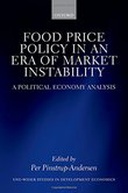Explore

Food Price Policy in an Era of Market Instability: A Political Economy Analysis
3 Ungluers have
Faved this Work
Login to Fave
Food price volatility is one of the major challenges facing the global agricultural system today. This was most vividly illustrated during the global food crisis of 2007–9 when price spikes occurred for key staple food commodities—such as wheat, rice, maize, and soybeans. Given the variety of reactions by governments of countries experiencing similar food price shocks, the 2007–9 crisis offered an excellent natural experiment for generating knowledge on responses to price volatility in particular and on the political economy of agricultural policy-making more generally. This book contains the wealth of collaborative research by a global team of experts on food price policy—the research was undertaken on a sizeable group of low- and middle-income countries that were highly affected by the 2007–9 food crisis. The central aim of the study is to uncover which political economy factors—ranging from the constellation of different interest groups to the nature of political institutions—explain variations in policy responses across countries. The research output proves valuable for at least three target audiences. First, it can inform international organizations and donors about which types of policy interventions can mitigate price volatility and whether they are feasible given a country’s political economy context. Second, it can help national policy makers better understand the trade-offs of certain policy interventions. Third, it generates much-needed further knowledge about the agricultural policy-making process in developing countries, which remains incredibly scarce despite the importance of agriculture to these countries’ economies.
This book is included in DOAB.
Why read this book? Have your say.
You must be logged in to comment.
